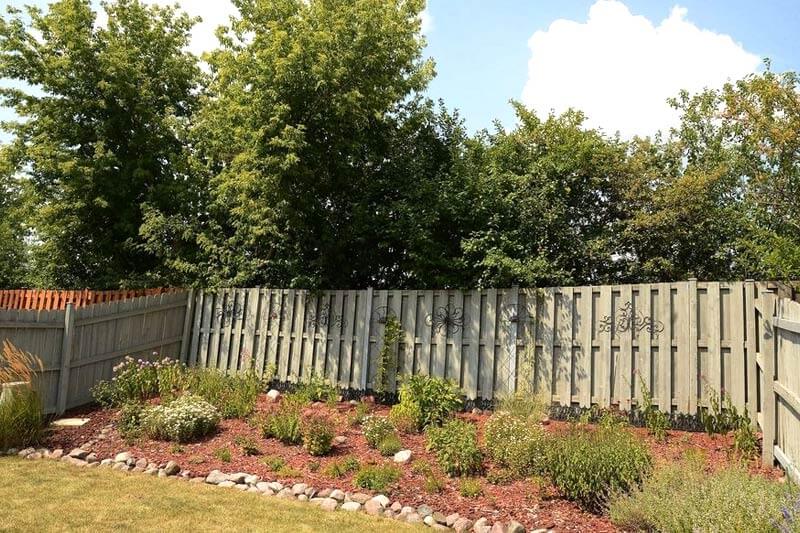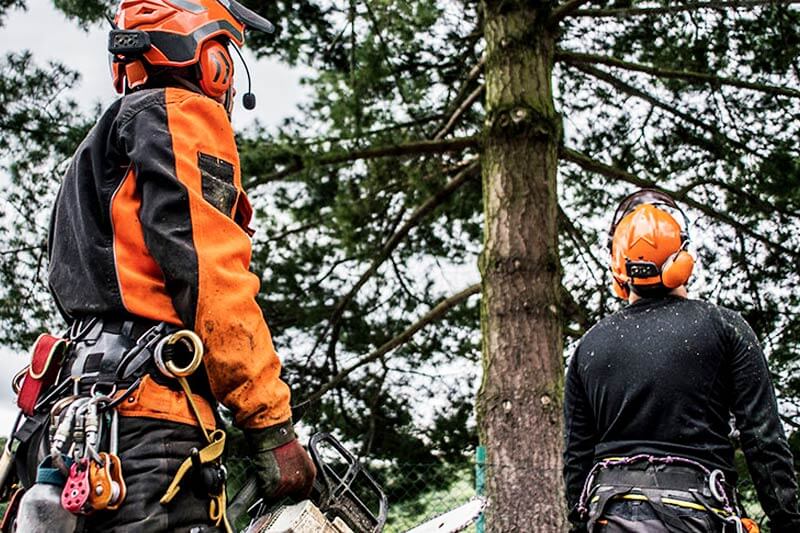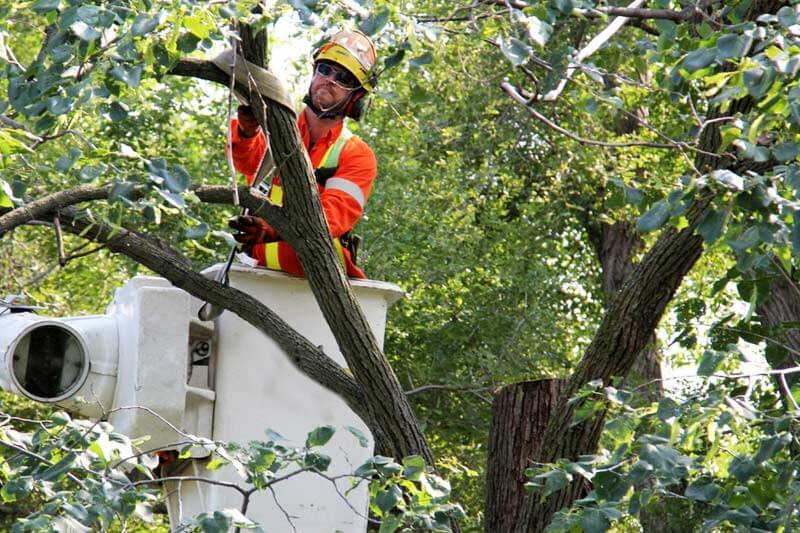Trees owned by the city are public property. Thus, when these trees extend over your property, what options are actually available to you?
If council trees are overhanging your property, you have two options. You can contact the council, inform them of the encroachment, and then request them to trim any overhanging limbs and branches. You can also apply for a permit. And if the council approves your application, you can trim the trees.
Here is everything you should know about handling overhanging council trees1 and how to avoid getting on the wrong side of the law.

What we cover
ToggleWhy shouldn’t you trim overhanging council trees without a permit?
The law allows you to trim a neighbor’s trees that are overhanging your property.
However, the law2 doesn’t give the same leeway when it comes to trees that grow on council land.
Trimming or removing council trees often requires a permit. And in most cases, failure to acquire a permit before trimming or removing the trees in question attracts hefty fines and other penalties.
Here are the main reasons why it is not a good idea to trim council trees overhanging your property.
The council can do it free
A council can remove a problematic tree that is overhanging private property.
If the tree is dangerous, diseased, or dying, the council can send qualified arborists and contractors to have it removed. The same applies in cases where the tree is causing significant property damage.
To get the council to remove the tree, all you have to do is notify them of the overhanging tree and the reasons why they need to either remove it or trim it.
Therefore, if the council can solve the problem for you, why not let them?
The tree may be endangered or protected
Trees on council or public land belong to the public. Some of them are included in the endangered species tree list. Others are offered specific protections under the law.
Interfering with such trees in any way without a permit is thus likely to get you in trouble with the law. And so instead of running the risk of being on the wrong side of the law, alerting the council of the tree’s state and the danger it presents is a more prudent approach.
To avoid disposal expenses
After trimming overhanging council trees3, what do you do with the resulting debris?
Keep in mind that keeping the debris still amounts to public property and so using it may amount to illegally profiting from public resources. And even if you are allowed to dispose of them, disposing of the trimmings costs money.
In short, why spend your time, energy, and money when your council can simply handle it for you?
How do you get a council to remove or trim an overhanging tree?
The key to getting a council to remove or trim a tree is to have a good reason as to why the council needs to act. With a good reason, you can get your council to not only remove or trim the overhanging tree but also cover the cost of tree removal or trimming.
If you have council trees overhanging your property and you need them to either trim or remove the trees, here are the steps that you should follow.

Contact them
Start the process of getting the tree removed or trimmed by notifying your local council. You can contact them by:
- Visiting their website and filling out an online tree trimming or tree removal request
- Writing an email or a letter outlining the need for tree trimming or removal
- Filling out a hard copy form and then submitting it to their offices
- Calling them
Outline the reasons
In your request, you also need to outline your reasons for wanting the council to remove or trim the overhanging tree.
The following are the reasons that most councils find to be credible enough to warrant their intervention.
- The tree is a danger to the public. This might be because it poses a falling risk or that it is blocking the view of drivers at an intersection or highway.
- The tree is diseased and is likely to encourage the spread of a tree disease to nearby trees
- The tree is causing significant damage to your property or at least poses a high risk of doing so
- The tree is poisonous
Attach evidence
To ensure that your application is granted, you also need to attach evidence that the tree is actually overhanging your property.
The evidence should be clear enough to illustrate the danger or nuisance that the tree creates. And it should also be enough to show why the situation requires the council’s attention.
Photographs and video evidence of the tree and its surroundings are often sufficient.
Submit an arborist report
While an arborist report is rarely mandatory, it usually adds weight to a homeowner’s claims. It increases the odds of an application getting approved.
And so if you can afford it, it is often prudent to let an arborist inspect the overhanging council tree. Once the inspection is done, ask for an arborist report and then submit it to the council with your application.
Wait and follow up
After the council receives your application, they will evaluate it. If they deem the situation serious or urgent enough, they will send qualified arborists to trim or remove the tree.
However, in most cases, a first try is rarely enough to get them to address your concerns. Therefore, writing follow-up emails and letters is often necessary. You may even have to call them several times.
What are some of the details you will need to provide for a successful application?
Generally, you will need to provide the council with a detailed description of the overhanging tree and the reason why they need to trim or remove it.
Some of the details that you need to provide include:
- The tree’s location
- The height of the tree
- The diameter of the tree’s canopy
- How far the nearest significant structure is from the tree
- The reasons why the tree needs to be trimmed or removed
- The types of tree work that you want the council to do. Do you want them to remove the tree? Do you want them to just prune it?
Really you shouldn’t need much of a reason. The fact that it is encroaching on your property is enough. They rarely decline applications such as these.
Can you trim a council tree overhanging your property?
Yes, you can trim a council tree overhanging your property.
However, in order to do so, you need to get permission from your council. This typically involves applying for a permit.
The following are the steps that you should take.
- Start by writing a cover letter explaining the reasons why you need the tree removed or trimmed. In the cover letter, detail the actions that you want to take.
- Alternatively, you can simply fill out an online form. Most local authorities have tree trimming or removal form requests on their websites
- Attach evidence of the state of the tree, its location, size, height, and proximity to other structures. Clear photographs and a video are often used to illustrate the tree’s condition and the reason why it needs to be trimmed or removed.
- Let an arborist examine the tree and attach an arborist’s report. While it is not mandatory, an arborist’s report usually helps in terms of convincing local authorities of the legitimacy of an application. It tends to boost the odds of a permit getting granted.
- Submit your application and pay the necessary fee. Most local authorities require you to pay a minimal processing fee when submitting an application, and so you will have to pay it when submitting your application for a permit.
- After submitting the application, wait. After a specified period, the local authority will examine your application, weigh its merits, and then approve it or deny it.
- If the council grants you a permit, you will then be free to trim or remove the tree. However, you will need to do so within the confines of the permit. But if your application is denied, then you can appeal the decision. And if after going through the appeals process you still don’t get approval, then you will be forbidden from interfering with the overhanging tree in any way.
Carrying out any tree maintenance work without permission, especially after your application for doing such work has been rejected, will only attract hefty fines. In some jurisdictions, these fines can go as high as $10,000 as they are primarily punitive in nature.

Do you always need a permit before trimming or removing an overhanging council tree?
No, a permit isn’t mandatory in all cases.
If the overhanging tree poses an imminent falling risk, then you can trim it without a permit. This applies in cases where the tree has a high likelihood of causing injury. And also where it poses an imminent risk of causing significant property damage.
The following are trees that qualify as posing an imminent risk.
- Dead or dying trees
- Trees with a sudden and significant lean
- Trees with dead limbs and whose branches are hanging dangerously
- Uprooted trees or ones that feature extensive root damage
And as far as trimming overhanging council trees is concerned, you might also get a pass when it comes to trimming branches of council trees that are poisonous. You may also get a pass if the tree belongs to a species that has been classified as being invasive in your area.
FAQ's
Generally, councils don’t remove trees from private property.
However, they often remove trees from private property if the trees:
- pose an imminent risk to the public. This includes trees that are uprooted after a storm and trees that have branches that are dangerously hanging on
- are diseased and carry a high risk of spreading the disease to nearby trees
- are blocking an intersection or otherwise creating poor visibility on adjacent roads
- are overhanging public property, especially if they risk destroying public property
- are obstructing access to public property
- are interfering with public utilities. For example, if the trees are too close to the power lines, the council may trim them in order to facilitate the delivery of electricity
Yes, you need a permit in order to remove a tree on your property. This is because trees are deemed to belong to the public. And so, even if you planted the tree and it is on your own property, you will still need permission to remove or trim the tree.
If you fail to get a permit first before removing it, you risk getting penalized. This is so especially if the tree turns out to be endangered, native, or protected.
However, there are times when you don’t have to wait for permission from the council. This often includes the following cases.
Dangerous tree
- Councils don’t generally require you to get a permit before removing a dangerous tree. Trees that fall under this category include:
- Trees that have developed an extreme lean, especially if it is sudden
- Trees that are dangerously close to your home or other significant property
- Trees that have significant splits, cracks, or cavities on the trunk or bark
- Trees with a hollow trunk
- Trees whose root systems have been significantly compromised
A diseased tree
Diseased trees are usually not as useful to the environment. In fact, in most cases, they are a risk as they can infect nearby trees. Most councils allow for their removal without a permit.
A dead or dying tree
A dead or dying tree carries a falling risk. It is also not as beneficial ecologically. And it can also be a pest magnet. As a result, it is often permissible to remove it without a permit.
An insignificant tree
The reason why councils restrict tree removal is to limit the ecological effects of such actions. Therefore, most councils don’t require one to get a permit to remove trees that are considered to be insignificant.
These are trees that often don’t meet the height and circumference thresholds that are required for a tree to be considered to be significant by the council’s Tree Protection Order or any other law or guideline. And so if you need to remove such a tree from private property, you don’t have to ask for a council’s permission.
A tree belonging to an invasive tree species
Most areas have tree species that they consider to be invasive. If the tree that is on your property belongs to a tree species that is classified as being invasive, you can remove it without a permit.
No, you don’t need permission from your neighbor to trim an overhanging tree.
Your rights
You can trim the overhanging parts because they are essentially trespassing onto your property.
You can trim these branches, and then throw the resulting debris back into their property. You may also dispose of them yourself.
Limits
However, when trimming the property, you are not allowed to go into their property in order to do so as that will be considered to be trespassing.
Also, you should only trim the tree’s branches up to your property line and no further. And when doing so, you should take care not to damage the tree to the point of killing it.
- Local Solicitors, (2021) The Law on High Hedges, Trees and Overhanging Branches. <https://www.localsolicitors.com/conveyancing-and-property-guides/the-law-on-high-hedges-trees-and-overhanging-branches> Accessed: 26-02-2024
- The Tree Council of Ireland, (2019) Trees and the Law. <https://www.treecouncil.ie/trees-and-the-law> Accessed: 26-02-2024
- Checkatrade, (2020) Overhanging Trees: Who’s Responsible? <https://www.checkatrade.com/blog/news/overhanging-trees-whos-responsible/> Accessed: 26-02-2024














